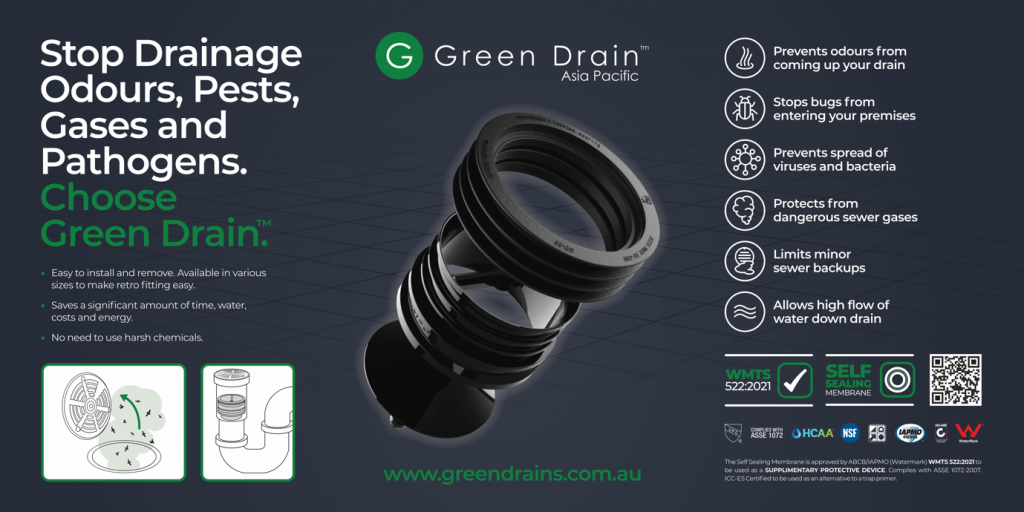Responding to water stagnation in buildings with reduced or no water use
The compliant plumbing layout may not be so compliant during lockdowns and low occupancy – it is reliant on someone or something to prime/charge it…, use the sinks and drains.
Assuming the building’s pipe network layouts have been designed in accordance with the Building Code and plumbing standards, there is no protection consideration or pathways for intermittent or non-charging of traps. Even if the building has automatic trap primers, these are expensive to install and run – and need to be regularly replaced, not to mention the sustainability impact of wasting thousands of litres of clean drinking water simply to charge each trap!
It is given that Plumbing and Building Codes look at design layout but they do not take into consideration the intermittent charging and possible long periods of in-use. The plumbing fixtures might be installed to specification, however they can still fail to protect compartmented settings during lock downs etc.

Preventative drain protection in Hospitality
Martin Stone, Technical Director of HACCP International explains –
 “Floor drainage in a food premise is an important part of the sanitation system and provides for waste and water on the floor surface to be efficiently and continuously disposed of. However, mismanaged drainage systems are a platform for food safety hazards.
“Floor drainage in a food premise is an important part of the sanitation system and provides for waste and water on the floor surface to be efficiently and continuously disposed of. However, mismanaged drainage systems are a platform for food safety hazards.
Firstly, traps that have been allowed to dry out do not do their job of separating the food zone from the sanitary waste system and allow a direct connection from the sewer into the food premise, an obvious concern in terms of a source for microbiological contamination.
Secondly, drains can be a breeding ground and harbourage for pests which emerge directly into the food zone and provide significant sources of contamination. Both these hazards become more likely to occur during times of intermittent operation, for example during a forced lockdown. A system of eliminating these two potential hazards continuously is highly recommended for any food premise.”
The Green Drain TM promotes not only water savings but also the minimising of corrosive, harsh chemicals polluting our waterways. The HACCP International certified solution is offered by a global distribution network of companies that believe in providing a more sustainable solution to solve commonly shared wastewater related problems.

Eddie Bocchino – MD of Green Drains Asia Pacific says,
“The Green Drain TM is a simple, yet effective, non-chemical tool to seal out unwanted pests and odours as well as isolating room to room transmissions. It just makes sense to stop wasting water, practice preventative maintenance and safeguard our environment.
The scale and sludge made up of bacteria, organics, fats and oils, built up over time, will solidify without water regularly running through them. Like cholesterol, this will cause pipes to clog. The only protection is the physical water barrier in each P-trap. This water barrier is likely to dry out, leaving it exposed to this risk. Even if it not completely dried out, the stagnant water is contaminated with bacterial biofilm that is an ideal haven for many pests, posing a much greater threat to pathogen infiltration and safety.
In any commercial production facility, each room has drainage points for wastewater that are individually compartmentalised and each one must be protected from the sewer network.
Green Drains Asia Pacific offers an innovative self-sealing supplementary protective device. It is cost-efficient, sustainable and environmentally considerate approach to safeguard against infrequent use of sinks and drains. Furthermore, it does not require water to give the trap protection.”
Related article by Princeton University published January 19th, 2021
The Green Drain Protection Program includes the use of Bio-Active enzymatic solutions. For more info visit their webpage.


